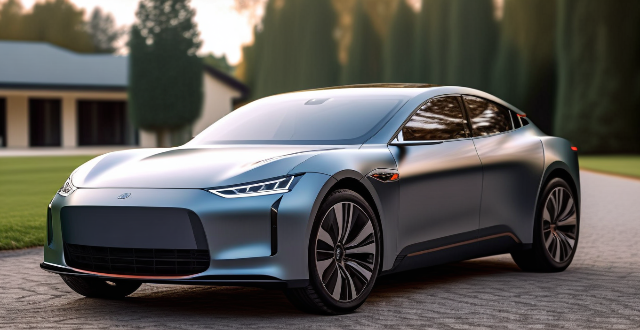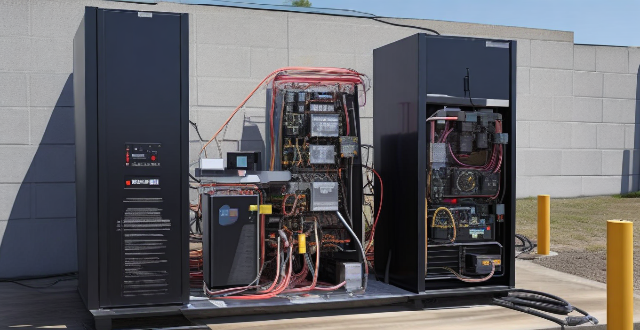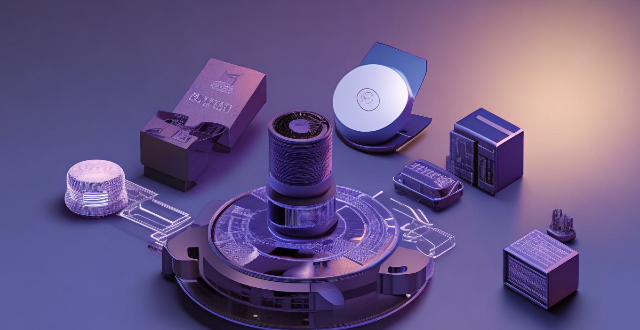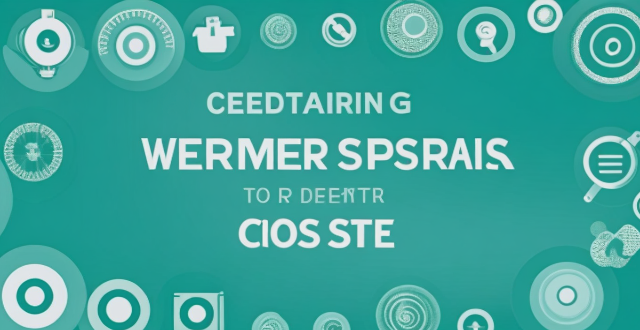Parallel Warranty

Is there a warranty for iPhone parallel imports ?
Parallel imports of iPhones are not directly imported by the manufacturer or authorized distributors, but rather by third-party resellers who purchase the devices from other countries and sell them in their own country. These phones may not come with a warranty from the manufacturer or authorized service providers. According to Apple's warranty policy, products purchased from an unauthorized reseller are not eligible for coverage under the Apple One-Year Limited Warranty. This means that if you buy a parallel import iPhone, it will not be covered by Apple's standard warranty. Some resellers of parallel imports may offer their own warranties or extended service plans, but these warranties are typically less comprehensive than those offered by Apple and may have limitations on what is covered. Purchasing a parallel import iPhone can come with certain risks, including no manufacturer support, potential quality issues, difficulty in repairs, and software updates might be delayed or unavailable for parallel imports due to regional differences in network compatibility and software certification processes. Before deciding to purchase a parallel import iPhone, consider the following factors: cost savings vs. risk, reseller reputation, understand your rights as a consumer, and explore alternative options such as refurbished models sold by Apple or certified pre-owned devices from reputable sources that still offer some form of warranty protection.

Can iPhone parallel imports be updated normally ?
**Can iPhone Parallel Imports Be Updated Normally?** - **iOS Updates:** Available globally for all iPhones, including parallel imports. - **App Updates:** Unaffected by the import status, updates through the App Store are standard. - **Considerations:** Warranty, support, and carrier compatibility may vary. - **Conclusion:** Parallel imports can be updated normally but come with additional considerations.

Are iPhone parallel imports covered by the national three-pack policy ?
The National Three-Pack Policy is a set of regulations aimed at protecting consumers' rights and interests in purchasing electronic products, including mobile phones. iPhone parallel imports are Apple iPhones that are imported into a country through channels other than the official Apple distributor. These imports may come from different regions or countries where the iPhone models are sold at a lower price. The coverage of parallel imports under the national three-pack policy is often ambiguous. Some parallel importers may offer their warranty and service support, but it may not be equivalent to what is provided by official channels. While most parallel imports are genuine iPhones, there is a risk of encountering counterfeit or refurbished devices that do not meet the same quality standards as those sold through official channels. Parallel imports can be cheaper since they may come from regions with lower pricing or take advantage of currency exchange rates. However, this lower price comes with potential risks regarding warranty, service support, and product quality. Consumers should carefully consider the potential risks and benefits before opting for parallel imports. It is essential to ensure that you are buying from a reputable seller who can provide adequate warranty and service support for your iPhone purchase.

What should I pay attention to when buying an iPhone parallel import ?
Buying an iPhone parallel import requires careful consideration and research to ensure that you get a genuine product at a fair price. Here are some tips to help you make a wise purchase: # 1\. Check the Seller's Reputation Make sure you buy from a reputable seller with good reviews and feedback. You can check online forums or social media platforms for reviews and recommendations from other buyers. # 2\. Ensure Compatibility with Your Network Before making a purchase, check if the iPhone is compatible with your local network provider. Some parallel imports may not work on certain networks due to differences in technology standards. # 3\. Check for Warranty and After-sales Service Parallel imports may not be covered by the manufacturer's warranty, so it's essential to check if the seller offers any warranty or after-sales service. This will give you peace of mind and protection against any potential issues that may arise. # 4\. Verify the Authenticity of the Product Be cautious of counterfeit products that may look like genuine iPhones but are actually fake. Check for signs such as misspellings, low-quality materials, or incorrect logos. You can also verify the authenticity of the product by checking the serial number on Apple's website. # 5\. Be Aware of Customs Duties and Taxes Parallel imports may be subject to customs duties and taxes, which can add up to the overall cost of the product. Make sure you factor in these additional costs when comparing prices with locally sourced iPhones. In conclusion, buying an iPhone parallel import requires careful consideration and research to ensure that you get a genuine product at a fair price. By following these tips, you can make an informed decision and enjoy your new iPhone without any issues.

What risks are involved in buying an iPhone parallel import ?
Purchasing an iPhone through a parallel import, which means buying it from a source other than the authorized dealer or official Apple store, can pose several risks. Here are the potential dangers and drawbacks you should consider before making such a purchase: - **Lack of Warranty or Support**: Parallel imports often do not come with the standard warranty provided by Apple. If something goes wrong with your device, you may have to pay for repairs out of pocket. You may not have access to Apple's customer support services, which can be crucial for troubleshooting and technical assistance. - **Uncertainty About Product Authenticity**: There is a risk of buying counterfeit iPhones that look like the real product but perform poorly and lack the quality of genuine Apple devices. Some parallel imports may have undergone unauthorized repairs or modifications that could compromise the device's functionality and durability. - **Difficulties with Software Updates**: Parallel imports might not receive software updates at the same time as officially purchased iPhones, or might not receive them at all. Updates may not be compatible with your device if it has been altered or is not an authentic Apple product. - **Hardware Variations**: The iPhone model you receive might vary slightly in hardware specifications compared to the version sold in your country. Your iPhone might not be optimized for local networks, leading to issues with connectivity and signal strength. - **Aftermarket Accessories Compatibility**: Accessories like cases and screen protectors bought locally might not fit perfectly due to slight variations in the phone's dimensions. - **Guarantee of Return or Exchange**: Returns or exchanges can be more complicated with parallel imports, as the seller's policies might be less consumer-friendly than those of official retailers. - **Potential for Financial Fraud**: Unscrupulous sellers might take advantage of buyers, selling fake or stolen goods, or even taking payment without delivering the product.

Is there a warranty for second-hand iPhones ?
When purchasing a second-hand iPhone, it is important to consider the warranty status of the device. The warranty coverage for a used iPhone depends on several factors, including the age of the device, its condition, and whether it was purchased from an authorized reseller or a third-party seller. In this article, we will explore the different types of warranties available for second-hand iPhones and provide tips on how to ensure you are getting a reliable device. If you purchase a second-hand iPhone from an authorized reseller, such as Apple's official refurbished store, you may be eligible for an Apple Certified Pre-owned Warranty. This warranty provides coverage for one year and includes hardware repairs, software support, and accessories. If you purchase a second-hand iPhone from a third-party seller, the warranty coverage may vary. Some sellers may offer a limited warranty that covers certain aspects of the device, while others may not provide any warranty at all. It is essential to ask the seller about the warranty before making a purchase and to carefully read any terms and conditions associated with the warranty. In some cases, a second-hand iPhone may not have any warranty coverage. Without a warranty, you assume all risks associated with the device's functionality and condition. If something goes wrong with the iPhone after purchase, you will be responsible for paying for any necessary repairs or replacements. To ensure a reliable second-hand iPhone purchase, check the device's IMEI number to ensure that it has not been stolen or blacklisted due to unpaid bills or insurance claims. Inspect the device in person (if possible) and test its functionality by making a call, sending a text message, and checking the battery life. Ask the seller about their return policy and consider purchasing an extended warranty from a third-party provider if you are concerned about potential issues with your second-hand iPhone. By following these tips and carefully researching your options before making a purchase, you can increase your chances of getting a reliable second-hand iPhone that meets your needs and budget.

Are iPhone parallel imports eligible for Apple's after-sales service ?
iPhone parallel imports can be eligible for Apple's after-sales service if they meet certain conditions, including proof of purchase, valid warranty, no tampering, and region compatibility.

Why are iPhone parallel imports cheaper than authorized ones ?
iPhone parallel imports are cheaper than authorized ones due to different pricing strategies, tax differences, lack of warranty or support, and the risk of counterfeit products.

How can I distinguish between a genuine iPhone and a parallel import ?
This guide provides a comprehensive overview of the key differences between genuine iPhones and parallel imports, emphasizing the importance of purchasing a genuine product to ensure warranty, software support, and hardware quality. It offers practical steps to identify a genuine iPhone, including checking model numbers, verifying IMEI numbers, inspecting packaging and device craftsmanship, looking for Apple's certification marks, visiting authorized resellers, and using online tools. The conclusion encourages readers to make informed decisions when buying an iPhone and to prioritize purchasing from reputable sources.

How does a Series Hybrid Electric Vehicle compare to a Parallel Hybrid Electric Vehicle ?
Comparison between Series Hybrid Electric Vehicle and Parallel Hybrid Electric Vehicle highlights the differences in power transmission, battery dependency, fuel efficiency, performance, cost, complexity, and regenerative braking capabilities of both types. The series hybrid is more efficient for city driving, while the parallel hybrid suits highway driving better. The choice depends on the user's driving habits and needs, with both offering environmental and economic benefits over traditional vehicles.

Can you convert a regular diesel car into a diesel hybrid car ?
Converting a regular diesel car into a diesel hybrid is possible but involves technical challenges, high costs, and potential legal and warranty issues. It requires installing a battery pack, integrating electric motors, and modifying the drivetrain and control systems. Professional assistance is recommended due to the complexity of the project. The financial investment may not be justified compared to buying a new hybrid vehicle. Legally, modifications could void the warranty and affect insurance coverage, and compliance with emissions and safety standards must be ensured.

Can I return a second-hand iPhone if it has issues ?
Purchasing a second-hand iPhone can be an economical option for those who want to own an Apple device without spending the full retail price. However, it's important to consider the implications of buying a pre-owned phone, particularly in terms of its condition and warranty. If you find that your second-hand iPhone has issues, whether they are cosmetic or functional, the question arises: Can you return it? When buying from an individual, there is no formal return policy unless agreed upon during the sale. You may have a short window to check the device and report any major issues. Many stores selling used devices will offer a limited warranty or return period. Be sure to ask about their specific policies before making a purchase. If the iPhone is still under Apple's warranty or you purchased AppleCare+ with it, you might be able to get support directly from Apple for certain issues. This does not usually include returns but covers repairs. Assess the issue by checking if it's a software or hardware problem. Contact the seller and negotiate a solution depending on the issue. Provide evidence like detailed descriptions and photos of the problem to facilitate understanding and negotiation. Seek professional help by visiting an authorized repair center or consulting with Apple if the phone is under warranty. Inspect the phone before buying by testing all functions and checking the appearance for any signs of damage that weren't disclosed by the seller. Purchase from reputable sources like certified pre-owned iPhone retailers who provide guarantees and inspections. Ask for proof of warranty and request documentation showing any remaining manufacturer warranty or additional coverage. While returning a second-hand iPhone with issues can be challenging and depends heavily on the seller's policies and the nature of the problems, taking careful steps during and after the purchase can mitigate risks. Always test the device thoroughly, inquire about warranty information, and maintain open communication with the seller to address any concerns that may arise.

What is the difference between an iPhone gray market and an official one ?
The text describes the key differences between an iPhone gray market and an official one. The main points are: 1. Authorization: Gray market devices are not authorized by Apple, while official market devices are sold through authorized retailers and carriers. 2. Warranty: Gray market devices may not come with a warranty or have limited warranty, while official market devices come with a warranty and support from Apple. 3. Price: Gray market devices may be cheaper due to lack of authorization and warranty, but customers should be cautious of potential scams and frauds. Official market prices are set by Apple and customers can take advantage of trade-in programs and financing options. 4. Accessories and Packaging: Gray market devices may come without original packaging, accessories, or documentation, while official market devices come with original packaging, accessories, and documentation. 5. Software and Updates: Gray market devices may not receive timely software updates or support from Apple, while official market devices receive regular software updates and support from Apple. 6. Resale Value: Gray market devices may have a lower resale value due to lack of warranty and potential issues with authenticity, while official market devices retain their value better due to warranty and support from Apple.

What should I check before buying a second-hand iPhone ?
When purchasing a used iPhone, there are several factors to consider to ensure that you are getting a good deal and a functional device. Here are some important steps to take: 1. Check the Physical Condition - Examine the Screen for cracks, scratches, or damage. - Inspect the Body for major dents or scratches. - Test Buttons and Ports including volume buttons, power button, charging port, and headphone jack. 2. Verify the Functionality - Check Battery Health using a battery health app or asking the seller. - Test Camera Quality by taking photos/videos. - Speaker and Microphone Test by playing music/videos and making calls or recording voice memos. 3. Software and Security - iOS Version compatibility with latest apps and services. - Activation Lock removal from previous owner's Apple ID account. - iCloud logout and Find My Phone disablement to prevent remote locking or tracking issues. 4. Carrier Compatibility - Determine if the iPhone is locked to a specific carrier or unlocked for multiple networks. - SIM Card Slot condition and functionality. 5. Warranty and Return Policy - Inquire about any remaining manufacturer warranty or extended warranty purchased by the previous owner. - Clarify the return policy in case of problems after purchase that were not apparent during inspection.

Are parallel hybrid electric vehicles (PHEVs) environmentally friendly ?
Parallel hybrid electric vehicles (PHEVs) are a type of hybrid vehicle that combines an internal combustion engine with an electric motor. While PHEVs have the potential to be more environmentally friendly than traditional gasoline-powered vehicles, their actual environmental impact depends on several factors, including the source of electricity used to charge the battery, the efficiency of the vehicle's components, and the driving habits of the user. One of the main benefits of PHEVs is their ability to reduce emissions compared to traditional gasoline-powered vehicles. By using both an electric motor and an internal combustion engine, PHEVs can achieve better fuel efficiency and lower emissions than conventional cars. However, the environmental impact of PHEVs also depends on how the battery is charged. If the electricity used to charge the battery comes from renewable sources such as solar or wind power, then the environmental benefits are even greater. On the other hand, if the electricity comes from coal-fired power plants or other non-renewable sources, then the overall environmental benefit may be reduced. Another factor that affects the environmental friendliness of PHEVs is the efficiency of their components. The more efficient the electric motor, battery, and internal combustion engine, the less energy they require to operate, which reduces their environmental impact. Manufacturers are constantly working to improve the efficiency of these components, which will help make PHEVs even more environmentally friendly in the future. Finally, the environmental impact of PHEVs also depends on how they are driven. If a driver primarily uses the electric motor for short trips around town and rarely uses the internal combustion engine, then the vehicle's overall environmental impact will be lower. On the other hand, if a driver frequently uses the internal combustion engine for long trips at high speeds, then the environmental benefits may be less significant. In conclusion, while parallel hybrid electric vehicles (PHEVs) have the potential to be more environmentally friendly than traditional gasoline-powered vehicles, their actual environmental impact depends on several factors. By taking these factors into account and making informed choices about how we use our vehicles, we can help reduce our impact on the environment and create a more sustainable future.

Can you drive a parallel hybrid electric vehicle (PHEV) on electricity alone ?
This article discusses the capabilities of parallel hybrid electric vehicles (PHEVs) and their ability to operate solely on electricity. It explains that PHEVs have an electric-only mode that allows them to drive without using the internal combustion engine, but this mode is typically limited to lower speeds and lighter load conditions. The article also highlights the benefits of electric-only driving, such as reduced emissions, quieter operation, and improved fuel efficiency. However, it notes that several factors can affect the electric-only range of a PHEV, including battery size, driving conditions, vehicle load, and tire pressure. Overall, the article emphasizes the importance of understanding your PHEV's capabilities and limitations to maximize its potential for eco-friendly driving.

How does a parallel hybrid electric vehicle (PHEV) work ?
Parallel hybrid electric vehicles (PHEVs) are a type of hybrid vehicle that combines an internal combustion engine (ICE) with an electric motor. The two power sources can work independently or together, depending on the driving conditions. PHEVs have three operating modes: ICE only, electric motor only, and combined power. The energy management system controls the operation of the ICE and electric motor, deciding which power source to use based on driving conditions, battery state of charge, and other factors. PHEVs offer benefits such as improved fuel efficiency, reduced emissions, tax incentives, and reduced dependence on fossil fuels.

What are the benefits of owning a parallel hybrid electric vehicle (PHEV) ?
Owning a parallel hybrid electric vehicle (PHEV) offers numerous benefits, including reduced emissions and conservation of fossil fuels, leading to environmental advantages. Economically, PHEVs provide fuel cost savings and potential tax incentives. They also offer performance benefits such as silent operation, regenerative braking, and instant torque. Additionally, PHEVs often come with advanced technology and features, preparing owners for a future with more electric vehicles. Overall, PHEVs combine environmental responsibility, economic savings, performance enhancements, and technological innovation, making them an attractive sustainable mobility option.

How can I trust the seller of a second-hand iPhone ?
When purchasing a second-hand iPhone, it is important to ensure that you can trust the seller. Here are some tips on how to do so: 1. Check the seller's reputation on online marketplaces or social media platforms. 2. Ask for proof of ownership such as receipts or warranty information. 3. Inspect the phone in person or ask for detailed photos and videos from different angles. 4. Test the phone's functionality by checking battery life, camera quality, speaker and microphone quality, buttons and ports, Wi-Fi and cellular connectivity, touchscreen responsiveness, app performance, iCloud account, activation lock, IMEI number, warranty status, water damage indicator, serial number, storage capacity, carrier compatibility, price, return policy, payment method, shipping method, meetup location, and test duration.

What is the range of a parallel hybrid electric vehicle (PHEV) ?
The range of a parallel hybrid electric vehicle (PHEV) depends on several factors, including battery size, driving habits, road conditions, and fuel economy. Larger batteries provide longer ranges, while smaller batteries offer shorter ranges. Driving habits also play a significant role in determining the range of a PHEV. Road conditions can affect the efficiency of both the internal combustion engine and electric motor, leading to lower overall range. The combined range of a PHEV typically falls within the range of 300-600 miles, depending on the model and driving conditions.

How long does it take to charge a parallel hybrid electric vehicle (PHEV) ?
The charging time of a Parallel Hybrid Electric Vehicle (PHEV) is influenced by the battery pack size, charging method, and equipment used. Standard charging (Level 1) takes longer, while rapid charging (Level 2) significantly reduces charging time. Examples show that standard charging can take up to 15 hours for a full charge, while rapid charging can reduce this to 2-5 hours. Tips for faster charging include using rapid charging stations and ensuring high-quality charging equipment.

What are the maintenance requirements for a parallel hybrid electric vehicle (PHEV) ?
Maintenance Requirements for a Parallel Hybrid Electric Vehicle (PHEV) include regular check-ups of the battery system, engine maintenance such as oil changes and air filter replacement, transmission maintenance including fluid checks and cooler maintenance, tire rotation and pressure adjustment, brake pad and rotor replacement, suspension maintenance like shock and strut replacement, and other tasks such as coolant system checks, wiper blade replacement, and light bulb checks. By following these requirements, you can ensure your PHEV runs smoothly and safely.

How do parallel hybrid electric vehicles (PHEVs) compare to traditional gasoline cars in terms of performance ?
Parallel Hybrid Electric Vehicles (PHEVs) offer better acceleration and fuel efficiency than traditional gasoline cars but may have lower top speeds and require more time for recharging. Gasoline cars have higher top speed capabilities and quicker refueling but are less efficient and require more maintenance. The choice between the two depends on individual needs and preferences.

How do you choose the right AC stepping motor for your project ?
Choosing the right AC stepping motor requires understanding project needs, selecting the appropriate motor type, ensuring compatibility with control systems, considering physical constraints, evaluating performance characteristics, accounting for environmental factors, managing budgetary considerations, relying on supplier support and reputation, and conducting thorough testing.

Is it worth getting my iPhone repaired or should I just buy a new one ?
When deciding whether to repair or replace your iPhone, consider cost, warranty status, technology advancements, personal preferences, and environmental impact.

What should I do if I receive a faulty second-hand iPhone ?
The text is about what to do if you receive a faulty second-hand iPhone. It suggests five steps: identify the issue, contact the seller, check warranty status, consider repair options, and explore trade-in opportunities.

Are all hybrid cars made equal or are some brands better than others ?
Hybrid cars vary in performance, reliability, and value across different brands. Brand A leads in engine efficiency, driving experience, acceleration, durability, maintenance costs, warranty, cost of ownership, resale value, and innovation. Brand B performs moderately well but lags behind Brand A in several areas. Brand C has the lowest ratings for most criteria, including durability, maintenance costs, warranty, cost of ownership, resale value, and innovation. Consumers should consider these factors when choosing a hybrid car to ensure they get the best value for their money.

Is it worth buying electronics at duty-free shops ?
When considering buying electronics at duty-free shops, one must weigh the pros and cons. Tax benefits can save money, but price comparison is crucial to ensure real savings. Product availability may be limited, and warranty and support validity in your home country should be checked. Return policies are stricter, and additional costs like baggage fees and customs charges may apply. Convenience is a significant advantage for immediate needs, but currency exchange rates can impact savings. Evaluate all these factors before deciding to buy.

Can I get my iPhone battery replaced at an Apple Store ?
Can I get my iPhone battery replaced at an Apple Store? Yes, you can get your iPhone battery replaced at an Apple Store through their "Battery Service and Support" program. To determine if your device is eligible for the service, consider factors such as warranty status, remaining battery capacity, and any damage to the device. The replacement process involves backing up your data, scheduling an appointment, bringing your iPhone and proof of purchase to the store, undergoing diagnostic testing, and finally having the battery replaced by a technician. Follow-up care includes testing and guidance on extending the lifespan of your new battery.

How much does it cost to repair an iPhone screen ?
The cost to repair an iPhone screen varies based on the model, type of repair service, and location. Newer models are generally more expensive to repair than older ones. Official Apple Store repairs are the most costly but guarantee quality and authentic parts, while third-party shops offer more affordable options. Urban areas tend to have higher repair costs than rural areas. If your iPhone is under warranty or you have purchased additional protection plans, the cost may be covered or reduced. Consider all these factors before deciding on iPhone screen repair.